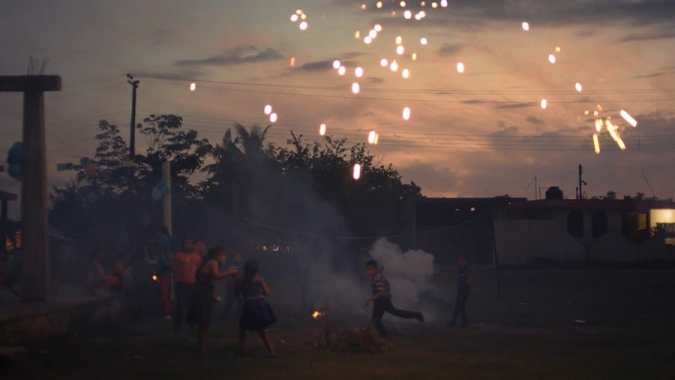When Mexican director and cinematographer Bruno Santamaría first met 16-year-old Ñoño on a Pacific coast village in Mexico, between Nayarit and Sinaloa, he saw something in the teenager that spoke to him. Santamaría, who is originally from Mexico City, had traveled to the village to see the natural beauty of the area and was able to produce some video projects while he visited there with a friend. One of the projects included filming the village’s young children reading letters they had written. It wasn’t until after that project, when he spoke to Ñoño, however, that Santamaría knew he had found an even more fascinating narrative. “We started to talk and shared ideas and problems that we both had,” Santamaría, tells Remezcla. “We understood that we both had been keeping a secret from our families. We built a friendship on trust.”
In his new documentary, Cosas que no hacemos (Things We Dare Not Do), Santamaría tells the story of Ñoño, a free-spirited Mexican teen who decides he is going to tell his parents that he wants to dress as a woman. Ñoño’s story resonated with Santamaría because, although in his early 30s, he had not yet come out to his parents about being gay.
“At first, I thought to myself, ‘What is the reason I am here?” Santamaría says. “Then, I met Ñoño and realized I wanted to talk about the things I hadn’t done in my own life because of society or because of homophobia. Everything clicked in that moment – like a moment of clarity.” A similar moment hit Santamaría as soon as production of the film wrapped, and he realized he was going to be asked questions about his decision to make the documentary. He wanted to be truthful, but he also didn’t want his parents to find out he was gay from reading an interview in the newspaper. So, about two months before the release of his film, he sat down with them and told them about his life. “When I spoke to them, they were very open to everything,” Santamaría said. “It was a lot easier that I thought it would be.”
During filming, Santamaría said he sometimes felt like he was projecting himself through Ñoño. Looking back at it now, he feels that Ñoño has his own story to tell. “In reality, I wasn’t able to do what Ñoño did,” he said. “But I was definitely inspired by him.”

As a Latino, Santamaría also wanted to create a sense of dissonance between the Latin American culture and how it can sometimes focus too much on the idea of machismo and what it means to be a man. When Santamaría traveled to the village, he knew it was risky because of the violence that sometimes occurs in the area. During production, he and his crew got a first-hand glimpse of that violence when a man was shot and killed at a party where they were filming.
“The Latino culture is full of fire and life and love,” Santamaría says. “But there is also a lot of guilt because of the constructs that religion puts on people. For me, it was important to show that in the Latino culture, there is a fight between guilt and freedom.” Santamaría hopes a film like Things We Dare Not Do can help individuals find a way to balance that guilt and freedom and allow them to live their life the way that makes them happy. For Santamaría, his journey has just begun.
“All these kids in this village are going to grow up one day and they are going to have to decide, just like Ñoño did, who they want to be,” he says. “I decided how to live when I told my parents. These are the steps you have to take to fight for your way of life.”
Things We Dare Not Do is streaming via Hot Docs until June 24, 2020.




